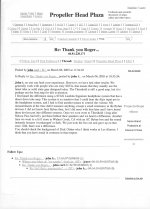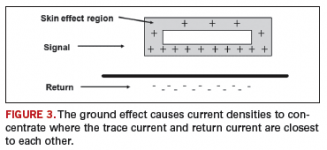In order to more clearly make my case for the need for advanced audio quality, I submit a couple of my earlier inputs from 1998 and 2003 respectively. What I am pointing out is how I rebuilt my hi fi system after losing it entirely. It is not so important what specific components I used, as the steady refinement in audio quality and how it effected my choices of audio accessories as it evolved. Today I am going to another level of audio quality in the next few months, including new speakers, new amp, new MC phono cartridge, etc.
Attachments
I am going to try a RC snubber of 140 ohms and .1uf.
The idea is known and would result in lower power dissipation. Be careful with the capacitor, it is a C-R-L series circuit (lumped impedance) and due to L the impedance turns to inductive above several MHz, for 100nF foil capacitor. No need to say that capacitor leads should be kept as short as possible, you know this.
I have spent some time over the years playing with the paralleling of exactly the right capacitor types and values to get optimum low impedances to as high a frequency as possible - just curious whether others have recommendations for the 'best recipes' ...
Every brand has different ESR/ESL quality related to capacitance so the best is by:
1) Oscilloscope
2) Listening (for good ears)
3) Expensive parts and there is that "standard" recipes originally suggested by... I think Carlosfm. I always forget this.
yes, it does... no need for me to even try to keep up.... i just add or ask here and there. Anyway, what you say is and is not complete. Like I said this is well known that hf current move to the edge in a flat conductor like a pcb trace. It also shows up in trying to transmit high pulsed current from one place to another... like a tapered transmission line of flat conductors. The current concentrates at the outer edge. In a circular conductor it is concentrated at the surface.
I have done some very interesting experiemnets on how to use this phenomon to control Z and phase on a pcb buss.... if there is interest here. Measurable stuff.
Thx-RNMarsh
Before we go off at tangents I believe we are both talking about what is illustrated in Fig 3. in the attached link:
http://circuitsassembly.com/cms/magazine/201/9190-the-skinny-on-skin-effect
And any info you have would be interesting.
Attachments
Last edited:
Now what do I mean about discussing 'audio quality'?
Well, I think that you have to have very good audio playback equipment to properly evaluate differences in components. Most people do not quite have that sort of 'investment' in either money or energy to really get there.
..........
This is circular reasoning. And full of holes. Once again, speaker with orders of magnitude more distortion are used to differentiate between various power amplifiers, and preamplifiers, regardless of type; and relatively crappy amplifiers and great amplifiers both turn up the vast differences between different speakers.
What is quality sound?
What is high fidelity?
I take fidelity at face value. Waveform input with linear gain equals waveform output.
A number of methods are available to discern the degree this identity holds up in practice. Differences other than change in gain are loss of fidelity, and loss of quality.
I will rely on my personal experience, thank you, on this.
Right now I just started playing a pristine direct disc vinyl recording 'The Missing Linc' from Sheffield records in the 70's. Wow! And better to come when I improve my system even more.
Of course I am using my own electronics thru-out.
The $30,000 speaker set-up doesn't hurt at all, but we have known for more than 40 years that you cannot equate static speaker distortion specs with distortion from electronics. This is what I do for a living---try to make sense of it all. This cannot be matched or better by any digital source that I can muster.
Right now I just started playing a pristine direct disc vinyl recording 'The Missing Linc' from Sheffield records in the 70's. Wow! And better to come when I improve my system even more.
Of course I am using my own electronics thru-out.
The $30,000 speaker set-up doesn't hurt at all, but we have known for more than 40 years that you cannot equate static speaker distortion specs with distortion from electronics. This is what I do for a living---try to make sense of it all. This cannot be matched or better by any digital source that I can muster.
This is circular reasoning. And full of holes. Once again, speaker with orders of magnitude more distortion are used to differentiate between various power amplifiers, and preamplifiers, regardless of type; and relatively crappy amplifiers and great amplifiers both turn up the vast differences between different speakers.
IMO there's nothing wrong with JC comment about the need of expensive components to assess audio quality. Light (but stiff) cones/domes can really display recording details cheap materials can't. Many think that such perceived details are actually distortion, but I think they are wrong. The distortion is EXCESS, something you have to pay for to get the discriminating drivers.
Speakers like Wilsons, due mostly to the tweeter, can be discriminating (the midrange is also better with Sasha than the previous WATT), but at the same time fatiguing and colored. So "skill" of the reviewing user is needed to take these conditions into account when using the speaker to review sounds (especially regarding tonality balance and fatigue).
Like many cases with electronics, the man behind the tool is more important than the tool itself. Speaker such as the Sasha is a good tool. There are better tools. But the question is, do you know what/where they are?
but at the same time fatiguing and colored. So "skill" of the reviewing user is needed to take these conditions into account when using the speaker to review sounds
Is this serious, you spend that kind of money to listen in spite of the flaws. If something was fatiguing and colored to my humble expectations I would chuck it off to another chump.
Before we go off at tangents I believe we are both talking about what is illustrated in Fig 3. in the attached link:
http://circuitsassembly.com/cms/magazine/201/9190-the-skinny-on-skin-effect
And any info you have would be interesting.
No. one test without ground plane near by -- and one test side by side traces.
Thx-RNMarsh
Is this serious, you spend that kind of money to listen in spite of the flaws. If something was fatiguing and colored to my humble expectations I would chuck it off to another chump.
If I had the speaker I would modify the crossover and replace the tweeter. BUT, financially more advantageous to sell it and build my own from scratch. With that amount of money I can get better drivers, and professional third party carpenter to build the enclosure for me.
The issue here is I believe JC didn't just invested his money on the speaker (he didn't 100% "purchase" it). Also, for commercial purpose it is not advantageous to say something like "I have reviewed my Blowjobb preamp using UNKNOWN speaker bla bla bla".
Met 7's are forgiving, stick to them, Scott.
It is not uncommon to use discriminating speaker to review equipments and to use forgiving speaker to enjoy music. But also possible is to have both speakers to review amplifiers, so the product will be more acceptable to more users of varying speakers.
After all, we cannot force others to use speaker that we think is the best. Commercially it is better to use speaker that is similar to the one mostly used in the target market, not ours.
ADD:
Many expensive stuffs users ask something like this: "I have X (famous brand) speaker at home, what amplifier is suitable to drive them?"
Or, an irony: "I have many expensive speakers at home but I want something else that will work with my cheap DartZeel" and the smart engineers are thinking that the DartZell is a dumb product. Yup, you're rite, engineers make lousy management and marketer.
Last edited:
I don't know why everyone thinks that they know and understand audio design, when they do not do it for a living. I don't claim to know everything about launching space vehicles, or how to plate a piece of metal, or even how to make plastic corks. I suspect that the people experienced with making or doing these things know more than me about them.
I DO NEED a good speaker system, and there is NO perfect speaker system, in my opinion. Every speaker that I have ever heard has compromises, and the Wilson series is included in my survey. However, I have never heard a 'cheap' pair of loudspeakers to sound as good as a selection of much more expensive ones, including a modern JBL with mid-range horn, big electrostatics, or even well designed direct radiators, like the Wilsons. Cheap, like the Met7's can sound pleasant, but not as revealing as the best of the hi end stuff.
I DO NEED a good speaker system, and there is NO perfect speaker system, in my opinion. Every speaker that I have ever heard has compromises, and the Wilson series is included in my survey. However, I have never heard a 'cheap' pair of loudspeakers to sound as good as a selection of much more expensive ones, including a modern JBL with mid-range horn, big electrostatics, or even well designed direct radiators, like the Wilsons. Cheap, like the Met7's can sound pleasant, but not as revealing as the best of the hi end stuff.
I think we have to keep in mind John's age, and I don't mean that disrespectfully, he would normally have a limited high frequency response if you checked his hearing and what some of us would find fatiguing sound on the top end he may not hear or not be bothered by. I can not listen to that tweeter myself but others may not notice the top end of it. That surely wouldn't be a speaker that I would think you would want to use as a reference for comparing the high frequency distortion of a high quality wide band amplifier to another.
I have owned khorns, and still have PSB stratous gold (collecting dust next to my marshall stacks) and currently use Thiel 3.7. I use a Theta front end (compli and gen vIII sr3) through a pair of crown macro reference. The system absolutely dead quite. The main improvement for me was running dedicated power. I have two 220V for each amp and 2 120 for the front end. Aso have a staxx electrostatic head phone system. This combo gives me the dyamics I find missing from a lot of systems, more like when playng a gig. MA not be the best, but works for me.
- Status
- Not open for further replies.
- Home
- Member Areas
- The Lounge
- John Curl's Blowtorch preamplifier part II


